Seoulwise—a great non-partying hostel in Hongdae
Hostels in large, popular cities are essentially fungible, and don't really need reviews or descriptions unless they're pretty exceptional. And usually, exceptional means they're exceptionally bad. Seoulwise is an exception, as it is one of the best-run hostels I've ever stayed at.The big reason for this is the owner, Mr. Young, who is basically there all the time and knows everyone who is staying there. As someone who has traveled a lot himself, he has a good understanding of what travelers want. Young manages to treat everyone like they are actually his guests, and not just customers, going the extra mile to help everyone out and make sure everyone is able to do what they want to do in Seoul. This leads to a very friendly atmosphere in the common areas, since he acts as glue and bonds everyone together through his friendliness and engagement with everyone. Personally, I was worried about the location of the hostel, since Hongik University is a notorious party place. Despite this, Seoulwise doesn't have a party-all-night atmosphere (which I appreciated... getting woken up at 3am by drunken revelers is no fun). Possibly a factor in this is that the proprietor doesn't let non-guests into the hostel rooms, and since he knows everyone it's easy for him to enforce.
In terms of facilities, it's got a full kitchen, two computers with fast internet service, and en-suite bathrooms in every room (but no bathrooms outside of the rooms, so no luck after you've checked out). There's free breakfast (toast, cereal, and coffee) and you can borrow an electronic subway card you can load up for cheaper fares.
When I was in Seoul, it was still a few weeks before Psy's Gangnam Style had dropped. One of the most popular song's I heard around town was Brave Guys' I 돈 Care (I Don Care)—there's a pun there, as "don" means "money" in Korean. Young told me that the Brave Guys were most famous as comedy singers, and if you see the lyrics in translation they betray surprising satirical depth.
Chinese and Mongolian Visas
I had hoped to get a Chinese visa in Korea, which would allow me to take a ferry from Seoul/Incheon to Qingdao, and thus avoid flying anywhere. I soon discovered that the Chinese Embassy in Seoul does not issue visas to anyone other than those who are residents of Korea (Korean nationals and foreign residents). This seems to be an increasing trend, as the Chinese are making it difficult to obtain visas to visit, especially if you are planning on visiting Tibet or Xinjiang. Other embassies seem to have similar policies—at least officially—but the Embassy in Korea actually follows it.With the Chinese visa not an option in Seoul, I had to figure out where I could get one. The obvious option would be Hong Kong, but even the official High Commision website says that "'[a]pplicants who do not enjoy HK resident status should apply for visas with the Chinese Embassies or Consulates General in their countries of citizenship or residence." Despite this ominous sounding warning, it turns out that tourists have no problem Chinese visas in Hong Kong, especially if the apply through a visa agency.
My next stop after Seoul would therefore have to be Hong Kong, so I was forced to break my no-flying rule quite early in my trip.
Since I still needed a Mongolian visa, I decided to apply for it in Seoul. The process was simple and straightforward, as you just go to the embassy with your passport photos and apply. The only complication is that you have to apply in the morning, and part of your application is the payment receipt you get from paying into their account at a local bank. This means you need to give yourself enough time to complete the application, go to the local bank (just next door), make a payment at the bank, and then return to the embassy with the payment receipt. Do this, and you get your visa two days later. Applications are dropped off in the morning and pickup is in the afternoon. Once you get the visa, you have 90 days to enter Mongolia, and it is good for 30 days after entry.
Korean War Memorial
It's called the War Memorial, but it's really more like a museum, and a great museum at that. They have tons of aircraft, ground machines, and even boats on display, many of which you can enter or at least peer into. It's like the Air & Space Museum in Washington, DC, but dedicated to military vehicles and not air- and space-craft.
It's
impossible
to imagine Japanese kids being so bold and confident to try and talk to
a foreigner, or having the technical language skills to be able to do
so, like the kids above did. This is one are where I definitely think
Korea is heads and shoulders above Japan: I believe they are generally
more open and less xenophobic. Part of Japan's problem is that they
genuinely believe that Japanese people and language are somehow unique
in the world, which they use as a way to explain why they have such
difficulty learning foreign languages and perhaps relating to
foreigners.
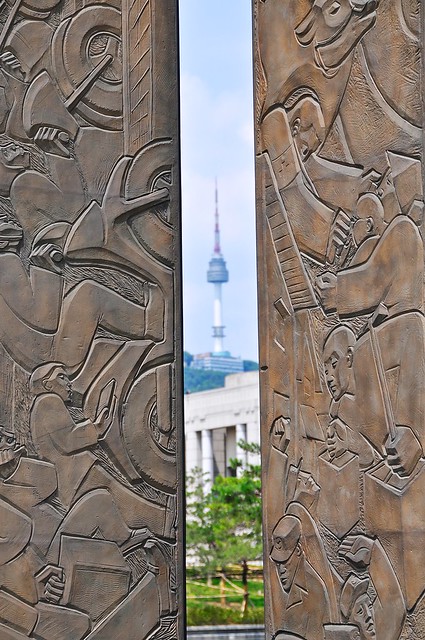 |
N Seoul Tower as seen to the north through part of the Memorial.
|
N Seoul Tower
Walking north from the War Memorial, you begin to ascend Namsan mountain as you head towards N Seoul Tower. Once you leave the urbanized area and enter the wooded park, you find paths and staircases leading to the summit.Around Downtown: Cheonggyecheon stream to Dongdaemun gate to Gyeongbokgung palace
From Namsan I walked around the downtown area, making my way to Cheonggyecheon stream, which was recently redeveloped into an urban park area.
I followed it the stream east for a while before making a slight detour to the north to visit Gwanjang market, a famous food alley, on the way to
Dongdaemun. One of the local shops is particularly famous for their mung-bean pancakes—a
local specialty— and judging by the lines they did indeed serve good
stuff. I got in line with the locals, and after waiting about 10
minutes I experienced something for the first and only time as a
traveler: I was refused because I was a foreigner. I get to the front of
the line, and everyone ignore me and moves on to the person behind me.
The people immediately behind me are a little surprised, but placed
their
orders, and this went on for a couple of minutes. I was kind of
surprised at how angry this made me, especially
after waiting in line. Back at the hostel, the proprietor suggested it
was an innocent mistake, or that they were simple embarrassed because
they didn't speak English, but it was all rather unambiguous to me:
there was a complete and total refusal to even make eye contact, and a
decision to act as though I simply didn't exist. Like I said, this is
the first and only time this has ever happened to me, and it was a
little shocking that it happened in Seoul.
After
cooling down from that episode, I headed to the shops south of
Dongdaemun for a little window shopping before heading to the gate
itself an onwards to the palaces.
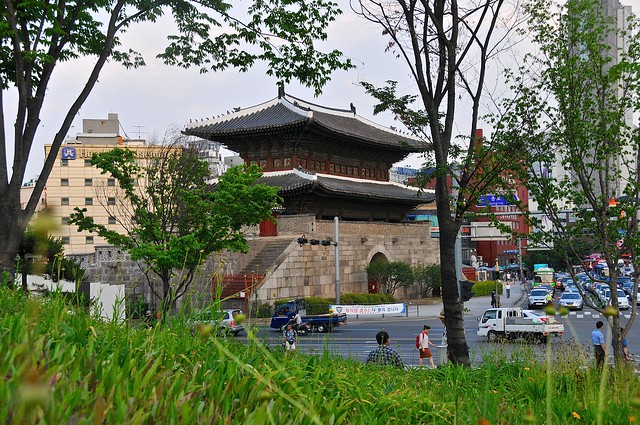 |
Dongdaemun gate.
|
Yulgok street curves to the west as it runs north, and will take you past both Changdeokgung palace and Gyeongbokgung palace.
Gyeongbokgung palace
Gyeongbokgung palace, built in 1395, is the main palace built during the Joseon Dynasty. The admission fee is a very affordable 3,000 won and there are free English tours at 9:30, 12:00, 1:30, and 3:00.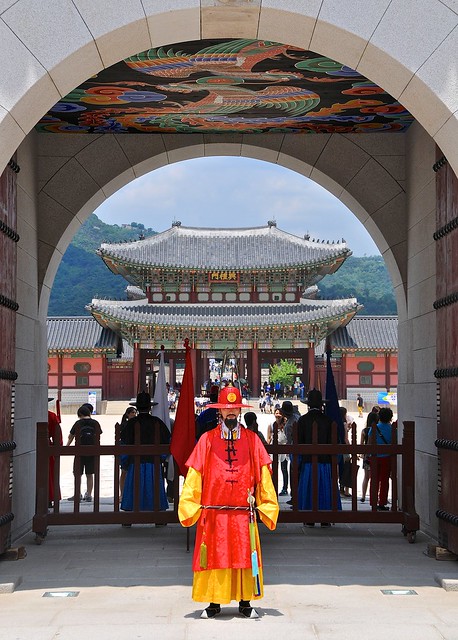 |
Ceremonial guard at Gwanghwamun gate. The fake beard and mustache really tie the costume together.
|
 |
Geunjeongjeon, the main throne hall of Gyeongbokgung.
|
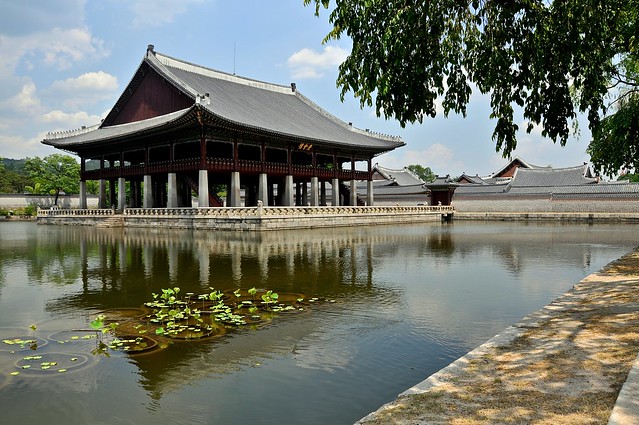 |
Gyeonghoeru, the royal banquet hall.
|
 |
Gyeonghoeru and a small boat.
|
 |
A view of the National Folk Museum.
|
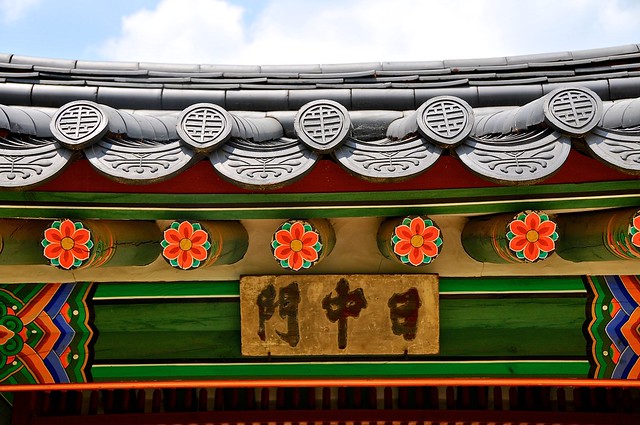 |
Detail of an entrance-way at Gyeongbokgung.
|
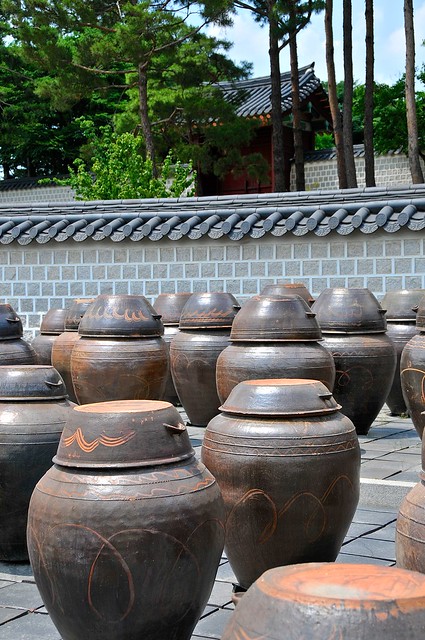 |
Storage jars at Gyeongbokgung.
|
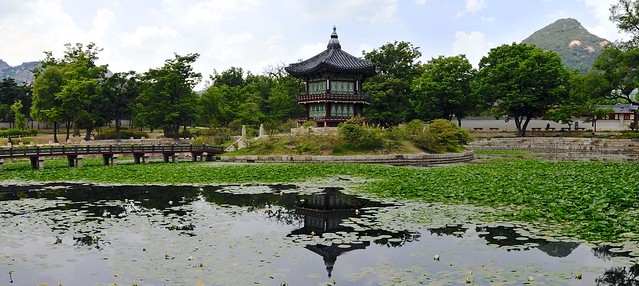 |
Hyangwonjeong pavilion.
|
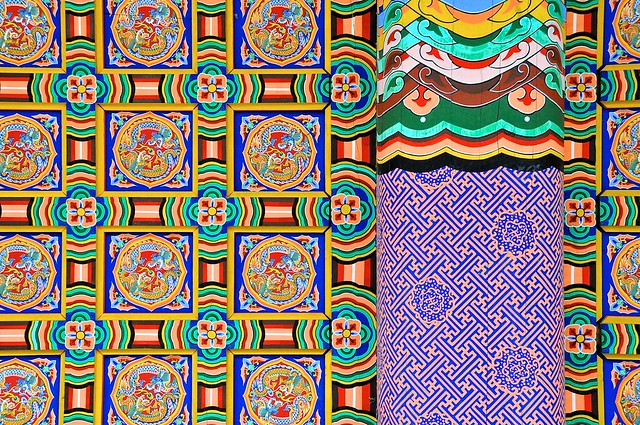 |
Typically ornate Korean paint-job.
|
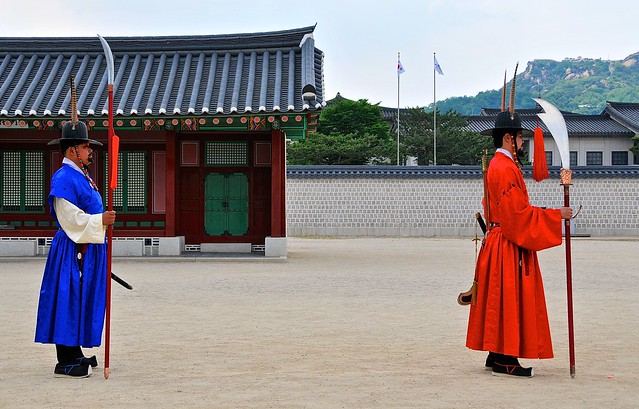 |
Guards participating in changing-of-the-guard ceremony.
|
Changdeokgung palace and the Secret Garden
Changedeokgyung palace was built at the same time as Gyeongbokgung, as part of the Five Grand Palaces of Joseon Dynasty. The secret garden can only be seen while escorted by a tour guide, and the English-language tours leave at 11:30, 1:30, and 3:30. The tour guides tend to speak English very well, and be very informative; I wish I had taken a tour at Gyeongbokgung, as well. You can see the tour course here.Admission to the palace is 3,000 won and admission to the secret garden is an additional 5,000 won, for a total of 8,000 won. Add in the Gyeongbokgung, and you have 11,000—if you plan on visiting at least these three buildings, it makes sense to buy the 10,000 won combination ticket, which gives admission to these three places as well as Changgyeonggung Palace, Deoksugung Palace, and Jognmyo Shrine at any time within one month of purchasing the ticket.
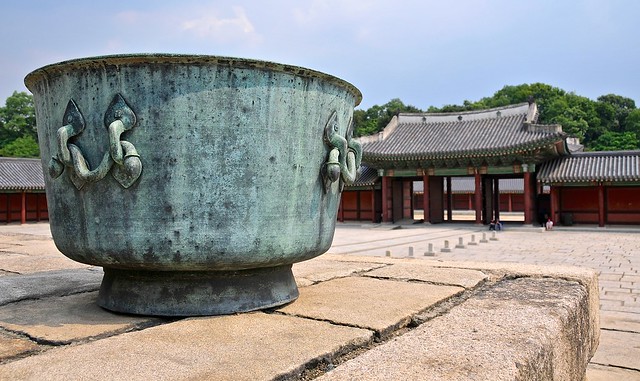 |
| Bronze water cauldron next to palace, used for the related duties of firefighting and warding away arson demons. |
 |
| Colourful wall. |
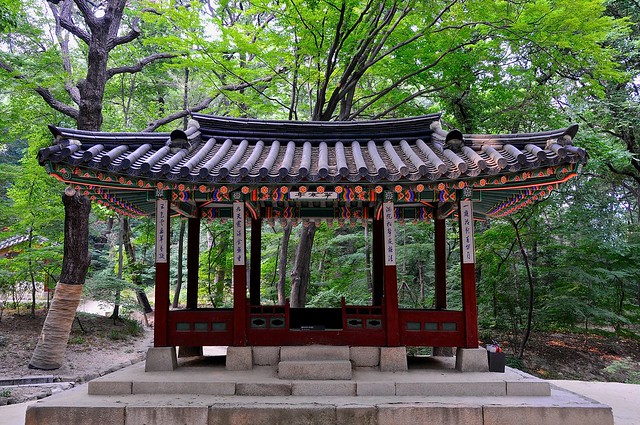 |
| Pavilion in the Ongnyucheon area of the garden. |
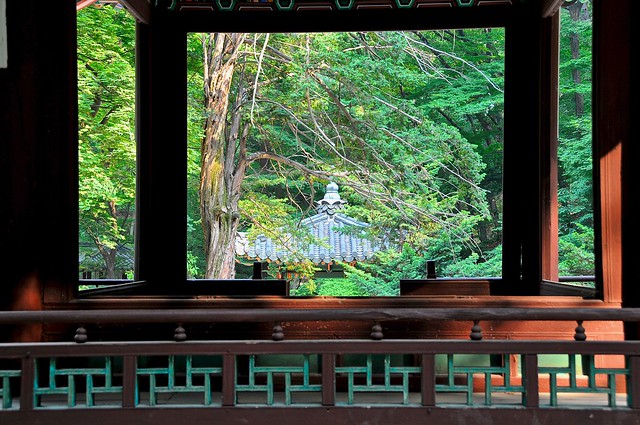 |
| View through pavilion. |
 |
| View through the simple dormitories in the Yeongyeongdang area. |
Bukchon Hanok traditional village
The traditional village of Bukchon Hanok is located in between the main palaces of Gyeongbokgung and Changdeokgung. There are a few streets of old, traditional architecture, and then some trendy shopping and cafes on surrounding streets. I didn't find it that impressive, especially since the exteriors of these homes aren't particularly attractive to my eye (look at the ugly concrete smeared all over the tile work on the roofs), but given its proximity to the palaces you might as well see it. |
Traditional
street looking south towards downtown and N Seoul Tower. Just about
every picture on the internet of Bukchon Hanok is of this street.
|
 |
Looking north up this same street in Bukchon Hanok.
|
Visa Pickup to Itaewon
After picking up my Mongolian visa I walked to the National Museum of Korea, which was on the way to the international section of town in Itaewon. | |
| View from the start of the Hangang bridge towards the Yeouido business district—a slight detour on my walk to the National Museum. |
 |
| The National Museum of Korea is in a striking new building surrounded by a nice garden and pond. |
 |
| A stone pagoda in the park in front of the National Museum. |
Itaewon is a bit like a foreigner ghetto. Some parts are decidedly seedy and there are a lot of disreputable looking places. Unlike North-American minority neighbourhoods, which are typically focused on one minority (Chinatown, Little Tokyo, Little Portugal, etc.) Itaewon has a wide spectrum of foreign cultures represented. Perhaps unsurprisingly, the main mosque is also located in Itaewon.
After visiting Itaewon and the mosque I returned to the hostel to decide what I would do with the rest of my day. I decided to follow up on my enjoyable trip to Busan's Geumjeongsan with a climb of Seoul's Bukhasan, which I describe here.
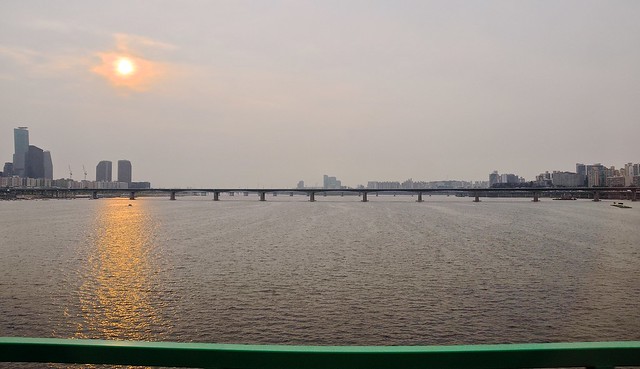
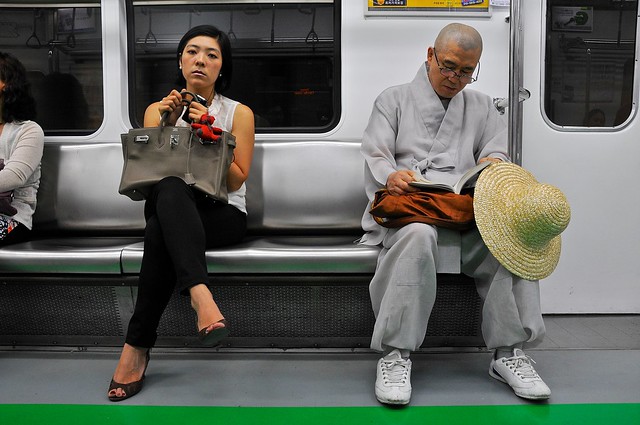
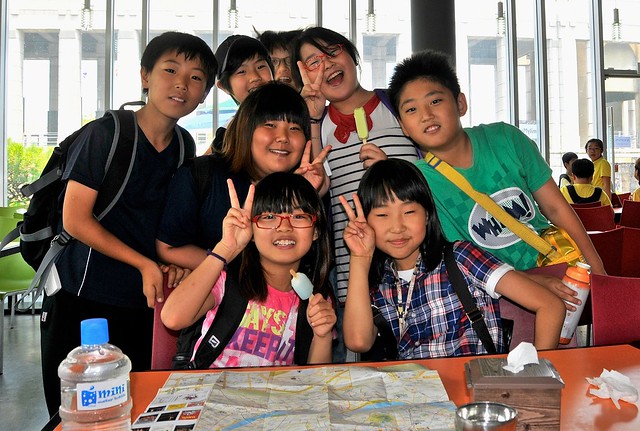
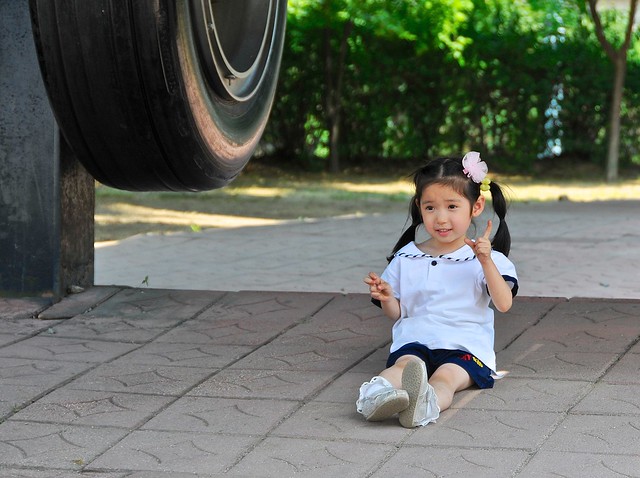


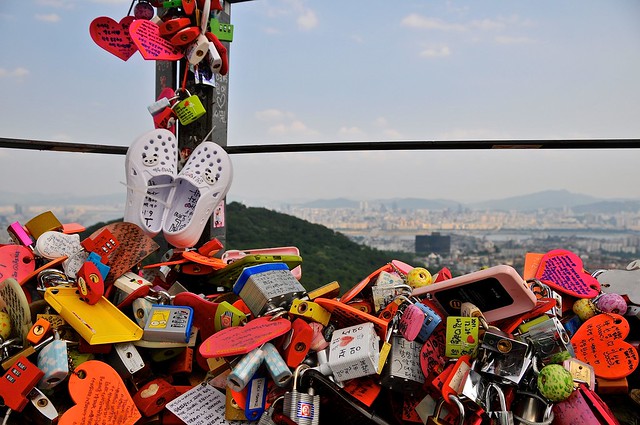
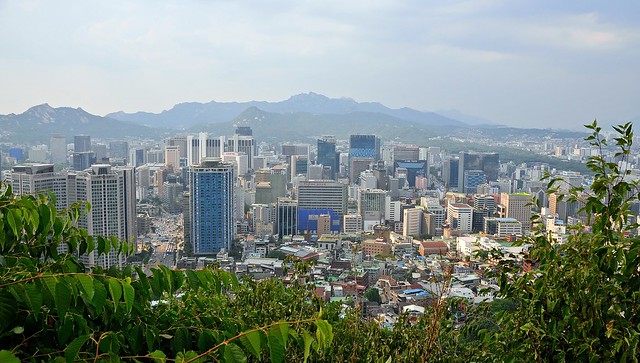
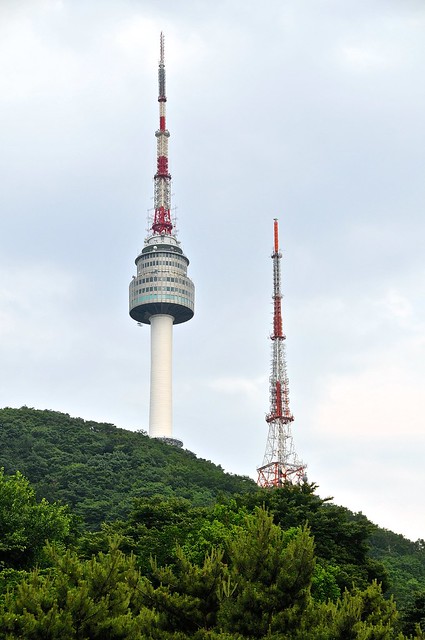

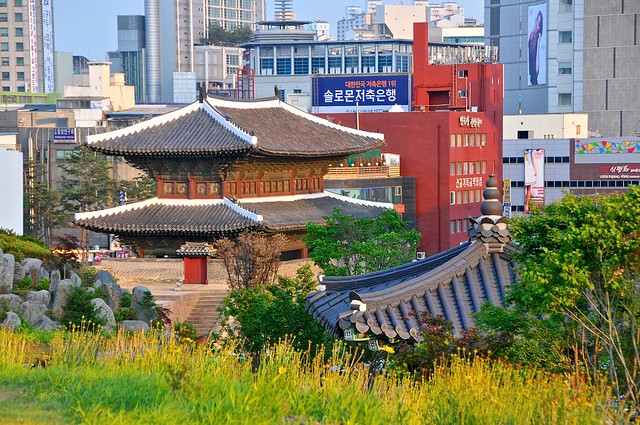


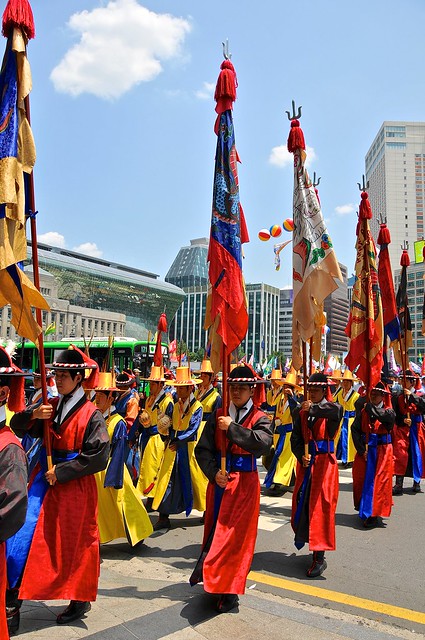
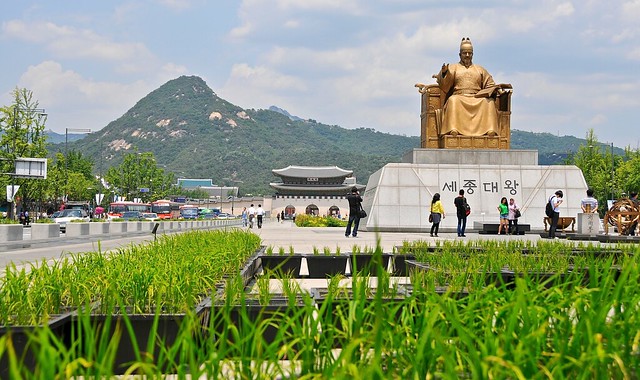

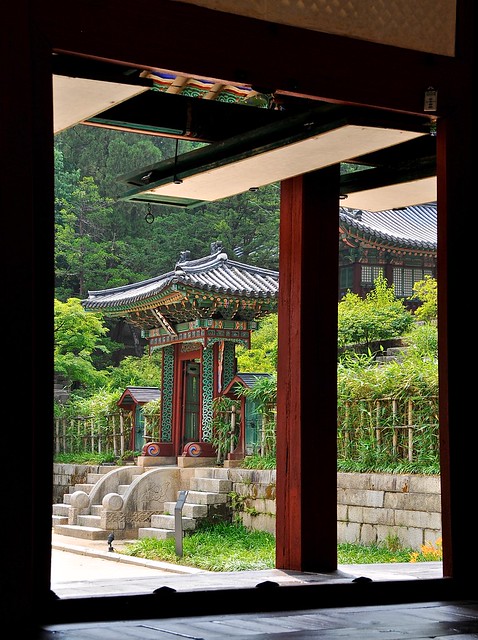
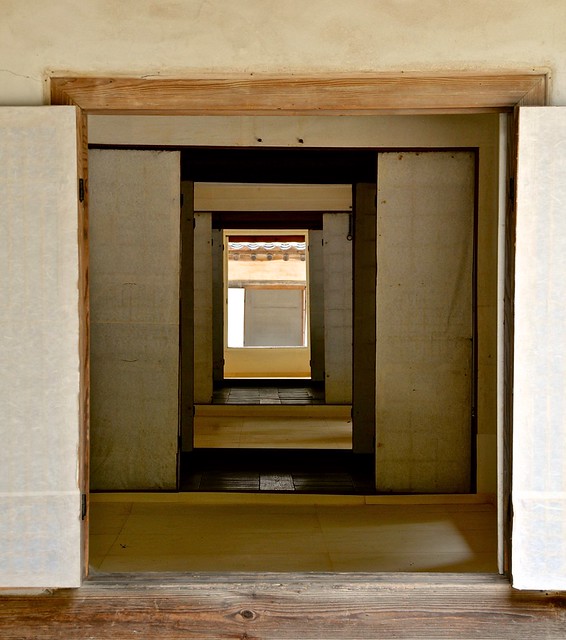

No comments:
Post a Comment